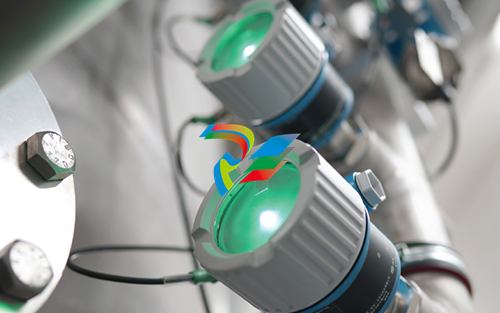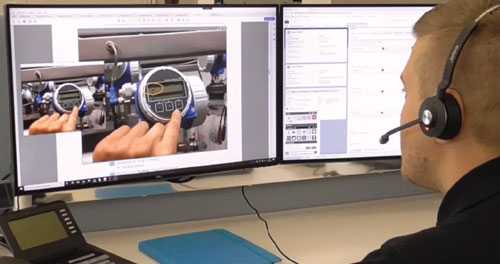
Smart Gauging Systems Improve Tank Farm Efficiency

IIoT-ready instrumentation can quickly enable data-driven reductions in failures and downtime.
The second law of thermodynamics states the total entropy—or natural disorder—of any system increases or remains the same in a spontaneous process. This is a foundational facet, one of the building blocks of thermal physics at the molecular level, and regardless of debate among physicists, it almost always applies to visually tangible macrosystems as well.
This principle is arguably the strongest driver for control systems, given the whole point of control is to methodically manipulate inputs from an environment containing varying levels of disorder into specific outputs that bring about desirable outcomes. These points warrant the requirement of maintenance in every plant, because equipment naturally degrades over time. Mechanical components wear, electrical connections corrode, and even static objects degrade due to atmospheric contact, or exposure to chemicals and other hazardous conditions.
Putting a spotlight on tank farms, maintenance is necessary to ensure measurement accuracy and plant safety. Maintenance activities have evolved over the years, with new technology built into modern smart instruments, providing more methods to diagnose issues, share data and verify measurement integrity.
Historically, these activities had to be conducted manually, requiring technicians to perform tasks in the field, often in hazardous conditions. But data-rich sensors and intuitive software solutions are making it much easier to identify and address problems, so plant personnel can improve their productivity while reducing downtime and incidents.
Inevitable breakdown
Degrading measurements in a plant can be thought of analogously as degrading fuel economy in an automobile. As a car racks up more miles, its engine and other mechanical components slowly wear down, requiring more fuel to drive the same distance, thereby decreasing fuel efficiency. This drop may be miniscule at first, but it can become more significant over time.
In the same way, measurement errors as instruments degrade in a plant environment may be small at first—often unnoticeably so—but as wear compounds, measurement drift increases. Additionally, as instruments age, there is a higher chance of complete failure.
In the past, maintenance teams performed service at routine intervals to reduce the effects of measurement drift, as well as the chances of total failure. But this sort of calendar-based maintenance strategy is inefficient, because some instruments may not need service at their appointed time, while others may fail before the maintenance interval. When the latter occurs, maintenance must be performed reactively and expensively, and downtime often ensues.
For tank gauging applications, reactive approaches frequently begin when a mass balance issue is realized. Troubleshooting these types of issues with traditional instrumentation can take inordinate amounts of time. Operators must visit each tank, making individual manual measurements to determine the source of the measurement errors. Once the issue is identified, often hours or even a day later, maintenance teams are called out to repair the problematic instruments.
Online diagnostics increase reliability and uptime
Today’s smart instruments have a plethora of diagnostic data—one area of notable improvement over instruments of yesterday—and when combined with holistic tank gauging system solutions, operators can maintain their systems with much greater reliability. Instrument diagnostics and other functions make it easier to detect problems, with quicker troubleshooting and servicing when issues arise.
Centrally managed tank gauging systems provide a single repository for maintaining all components, including instruments, equipment, software, and maintenance devices. These systems can be easily connected to the cloud for enhanced monitoring and analysis solutions that generate insights, alerting maintenance teams of the ideal times to service instrumentation and equipment.
Using the software dashboard of these systems, operators can monitor field status at a glance, with anomaly and issue detection delivered via notification. When issues are detected, they are easier to troubleshoot because the system has predefined lists of error codes and descriptions, including cause and remedy. This can reduce the time spent troubleshooting and addressing issues in the field from hours to minutes.
Increasingly, these modern solutions are equipped with augmented reality (AR) capabilities. Field technicians put on a set of connected AR goggles, remotely projecting what they see to a support engineer. This engineer can reference diagrams and instructions on a computer in an office, and not only tell, but show, the technician which parts to adjust by using a virtual pencil tool to highlight the desired component, easing maintenance procedures significantly (Figure 1).




.jpg)
















































.jpg)
.jpg)





.jpg)



.png)
.jpg)

.jpg)
_lVjBYb.jpg)

.jpg)
.jpg)



.jpg)
.jpg)







.jpg)

.jpg)
.jpg)











.jpg)




.jpg)
.jpg)
.jpg)
.jpg)
.jpg)
.jpg)

.jpg)

.jpg)
.jpg)
.jpg)








